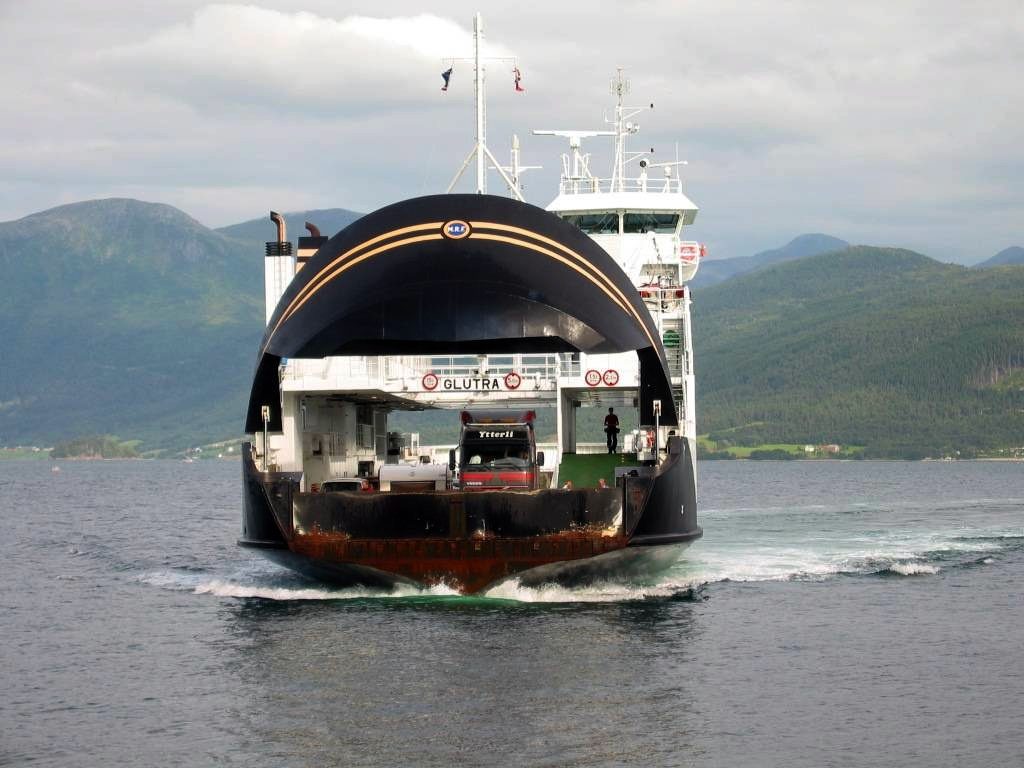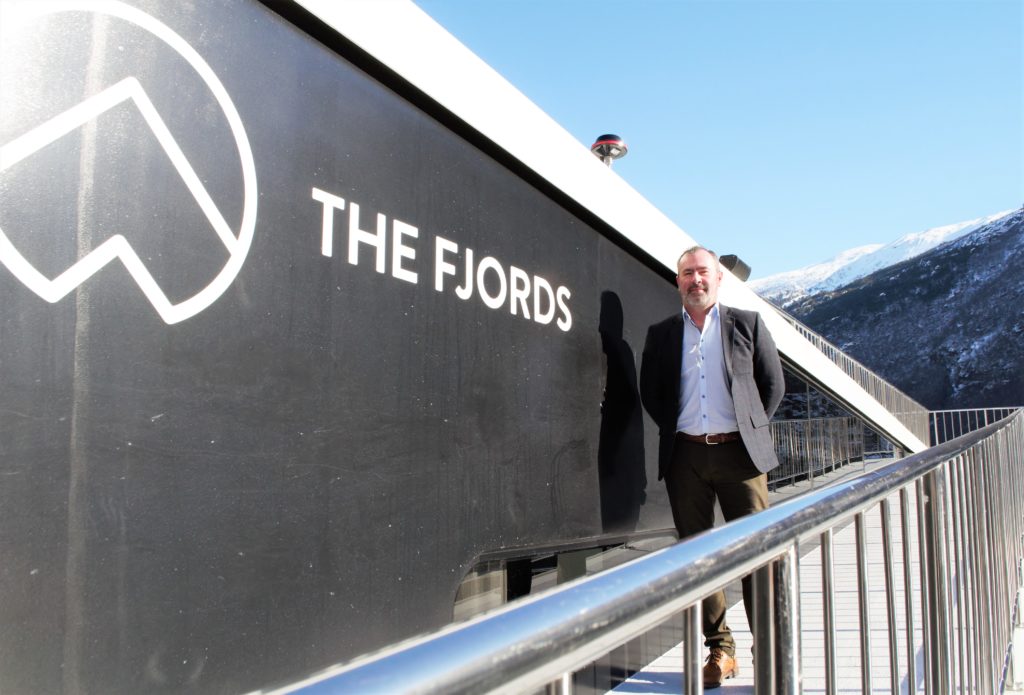NORWAY has over 1,000 fjord, giving it one of the longest coastlines in the world despite its relative size. As a result the country’s road infrastructure is a network of tunnels and short ferry services to connect communities. There are hundreds of these ferries in service, some dating back to the 70’s. Some are more modern. Very modern. The country’s fjords are its biggest tourist attraction, maintaining a clean image is increasingly important and this is now leading some to look to this Scandinavian country as a poster boy for a clean, and in particular, decarbonised, international shipping industry.
With growing awareness of the anthropogenic impact on the environment, particularly in relation to air, so has political pressure to clean up transport in the country (These days Norway tries to export its oil and gas, rather than use it) and this has led to something of a revolution in transport power, and a burgeoning maritime cleantech cluster in the country.
It has also pushed the country’s localised shipping businesses to seek and use these solutions. As a result Fjord1, one of the family controlled (but now Oslo-listed) ferry operators that chases after regional concessions to run some of these ferry routes around the fjords, was behind the first LNG-powered ferry, Glutra, to hit the water in 2000. It is now pushing out new orders for battery-powered or hybrid vessels that will meet the increasing pressure from local authorities for clean ferries.

Fjord 1 already has two in service. Gloppefjord and Eidsfjord started operations early this year, and the company also co-owns The Fjords a tourist focused outfit based in the small town of Flåm that has the diesel-battery powered Vision of the Fjords and will soon be operating the Future of the Fjords, another totally battery powered vessel.

Fjord 1 is not the first to push out an all electric ferry in Norway, that honour goes to Norled which operates Ampere, a ferry delivered two years ago. Finland also has a similar vessel, called Elektra, and in Sweden HH Ferries has had two of its vessels converted by ABB.
While the Norwegian press has reported that Ampere had been beset with technical problems shortly after its delivery and spent much of its time out of service, this has not stopped Fjord1 pushing on along its own electric route.
The company recently announced it had ordered seven battery-powered road ferries to add to others it already has on order. Most of the vessels will be built at Havyard shipyard, a company linked to Havila Holdings which has an indirect 51% stake in Fjord1.
Scaling Up
For lobby groups, like Brussel’s based Transport and Environment, that are trying to build up decarbonisation pressure with the European Union and in particular the IMO, the Norwegian story is compelling.
This is understandable. It was positive state and industry backed encouragement that saw Norway lead the way with LNG-fuelled shipping from 2000 and it is now leading the way with battery powered shipping. International shipping has seen confidence in LNG powered vessels (with either dual fuel or pure gas engines) grow to the point where the experiences of Norway with its small ferries and then offshore vessels has now led to companies like Sovcomflot and CMA CGM building large vessels on international trades that have dual-fuel capabilities.
Take up of LNG powered shipping over the last 18 years has not been rapid, but with the technology and fuel now being used in almost every vessel type and size, it makes it hard to use fuel and technology availability oas a show stopper.
T&E’s shipping expert Faig Abbasov is confident that shipping can decarbonise its assets if it wants to.
For him, and many others, they see LNG as a way to show that the industry can take to new fuels and technology and lower carbon emissions and costs, but see it as a sort of cul-de-sac in the decarbonisation debate. LNG is still a contributor to shipping’s carbon footprint and is therefore not a solution to decarbonise it. Other solutions are needed, and battery powered short sea shipping may be one of the solutions.
The April meeting of the IMO’s Marine Environmental Protection Committee is going to be crucial in this debate as member states plan to discuss the level of ambition the industry should strive for when it comes out with a strategy that will show it is collectively willing to follow the example of the Paris Agreement and work with society in keeping global warming to under the 2 degrees increase.
For Abbasov and the other environmental lobbyists the stakes are high. They see some of the submissions that have been made by member states and owner groups under the label of “ambitious” as anything but ambitious and seek stronger commitments from them.
They want to be able to show rule makers at the IMO meetings that there is the technology and there are the avenues to decarbonise shipping. That avenue could well be to scale up the electric avenue that Norway has just started on.
But can battery power save shipping? Despite the significant improvements in size, cost and power density of batteries in recent years there are challenges. Larger vessels need larger batteries and therefore faster charging in port. Costs are not down sufficiently and of course the technology is far from being proven for deep sea. But that’s not to say it will not get there.
Earlier this month Stena announced its intention to install batteries on Stena Jutlandia recently. The EU funded project, will see a small set of batteries installed first, to provide up to 1MWh of power. This will allow the vessel to use the batteries during operations when there would be peak loads on the engines, meaning the engines can run more optimally with the batteries providing the power needs at times such as port maneuvering.
If all goes well with the first stage, then the second stage will see Stena Jutlandia install up 20 MWh of capacity offering, with the goal to achieve 10 nautical miles of battery powered sailing. A third stage, with 50MWh capacity would allow up to 50 nm of sailings, enough for the vessel’s current route between Gothenburg in Sweden and Frederikshavn in Denmark. This would also demonstrate battery power in an international voyage, albeit a short one.
The joint venture between Fjord1 and Flåm AS, the travel and tourism firm based on getting visitors to the town of the same name and onto the local fjords, will reveal Future of the Fjords next month, the vessel has already been built at the same yard as the joint ventures first boat.
The Fjords CEO Rolf Sandvik is proud of the company’s owners approach to developing something new and hints to that attitude not stopping with the Future of the Fjords.
Like many he thinks the fuels of the future debate will likely intensify as new solutions, such as hydrogen-powered fuel-cells start to become recognised solutions. One project has already been announced, the Viking Cruise newbuilding due for delivery in 2020.
To some extent it may not matter what the IMO’s member states decide at MEPC. Such political discussions have a reputation of resulting in middle-ground compromises. What matters in the Nordic regions is that Norway, Finland and Sweden have been showing one way to contribute to the decarbonisation agenda with short sea shipping, and look like continuing to do so.
Fathom.World
































